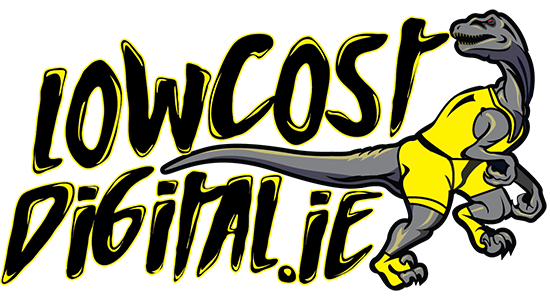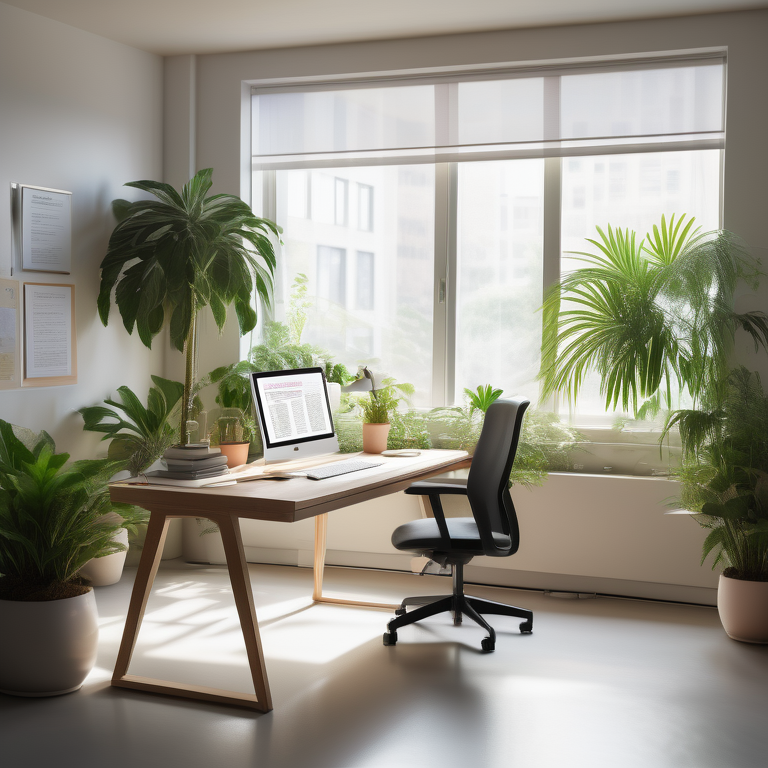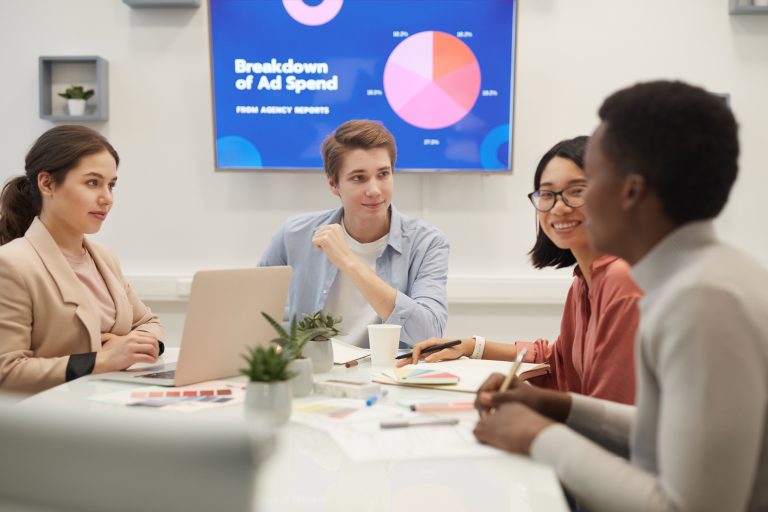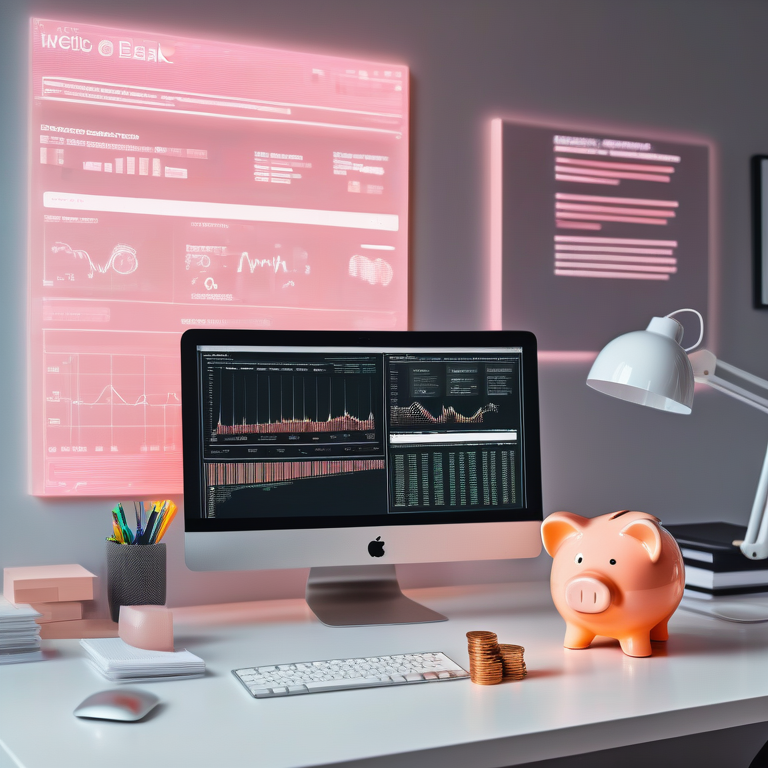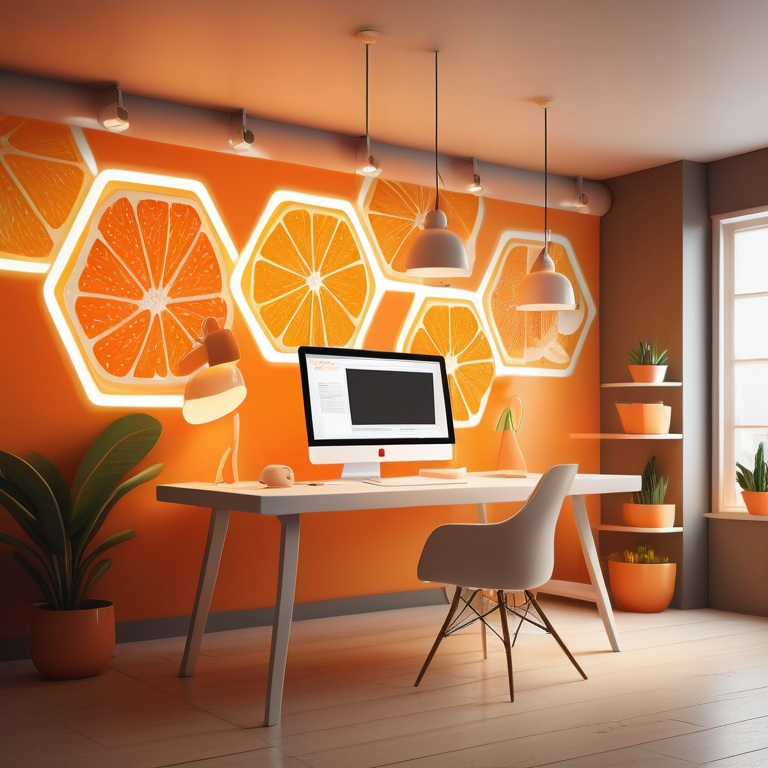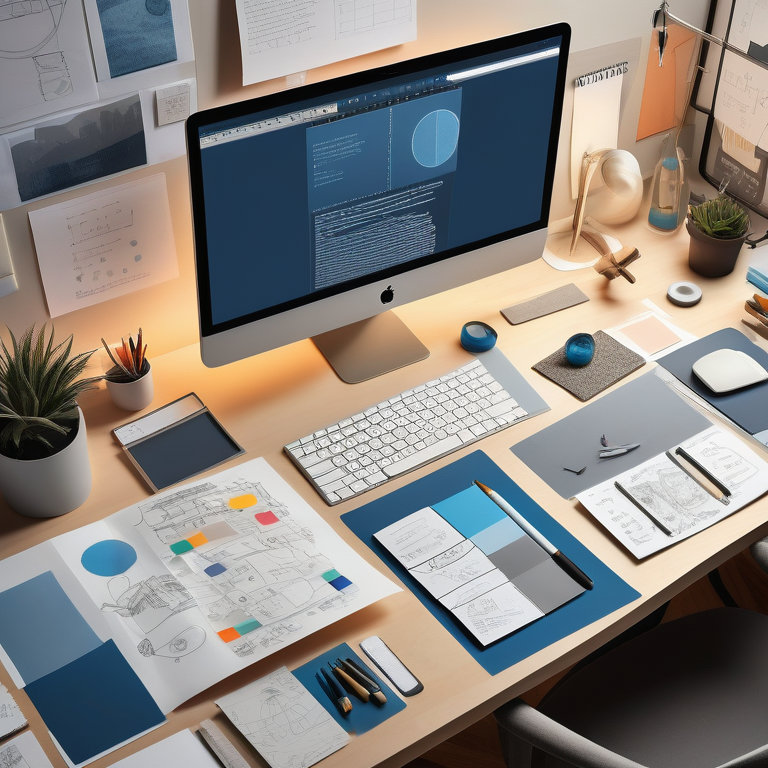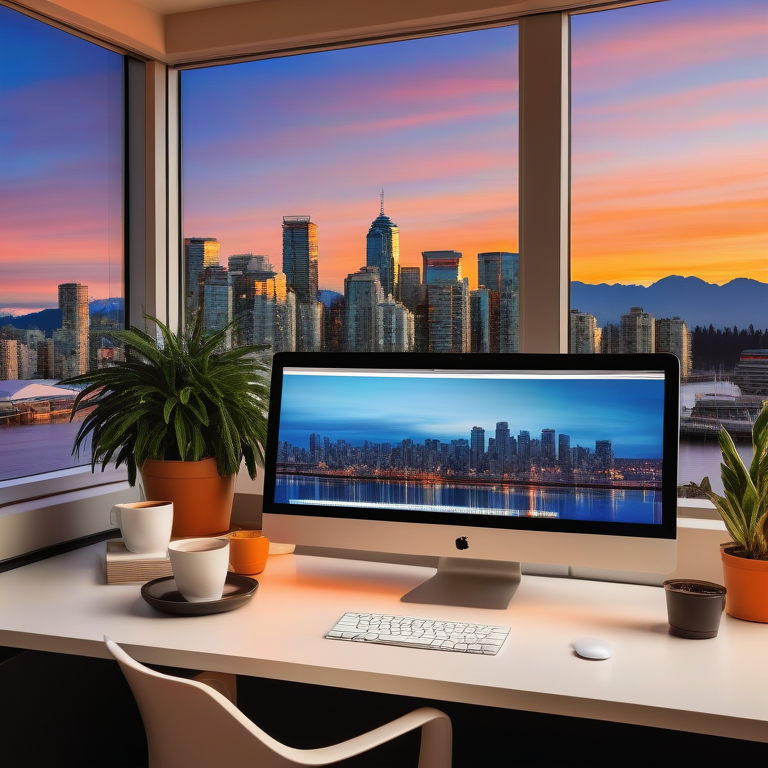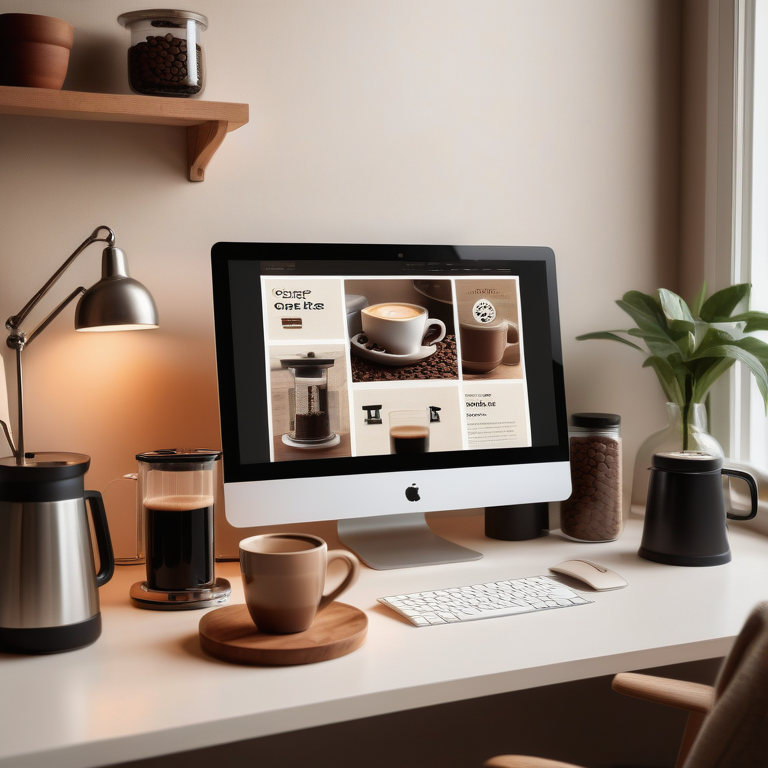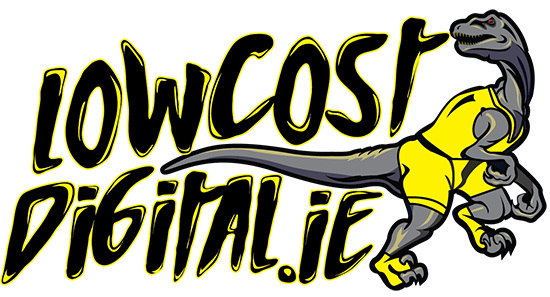In this comprehensive guide on visual web design, we will delve into the importance of aesthetics and user experience in creating a visually appealing website. From color schemes to typography, we will explore the key elements that make a website visually engaging and user-friendly. Stay tuned for practical tips and examples to enhance your web design skills.
Key Highlights
- Web design refers to creating the visual aspect of online websites and mobile apps, and it has evolved to include creating digital products for all sorts of devices.
- Web designers solve communication problems between the software and the user similar to UI designers.
- Visual design principles such as layout design, color selection, graphic design, fonts and typography, and content structuring are crucial in web design.
- Web design and UX design work together to create a seamless user experience.
- The principles of web design are rooted in the Gestalt psychology, including the principles of emergence, reification, multistability, and invariance.
- Web designers can use these principles to create cohesive and impactful designs.
Introduction
Web design is constantly attracting people to the field, but what do web designers do? What do they study for their practice? In this comprehensive guide, we will explore the world of web design and its relationship with user experience (UX) design.
Web design refers mostly to creating the visual aspect of online websites and mobile apps. Back when the internet was taking its first steps, web design was all about creating websites but has since evolved into creating digital products for all sorts of devices.
Web designers today touch all sorts of aspects and faces of digital design, from creating a layout to orchestrating the visual identity of the product. It’s true that web design has become very closely connected to other key areas of digital product design, including UX design, UI design, web development, and graphic design. There’s a line that continues to get blurrier and blurrier between web design and these other disciplines, highlighting the importance of graphic designers in creating successful and visually appealing websites with the best web design software, including animation features.
It’s important for web design beginners to understand that the world today doesn’t focus on the line that separates them but on the results of combining these areas of expertise. You could be a very demanded talent as a web designer if you had a stable footing in coding, specifically HTML, CSS, JavaScript, and bootstrap, but you can reach success without any coding experience at all. With the help of a powerful website builder, even non-coders can create professional and visually appealing websites using HTML, CSS, JavaScript, and Bootstrap. The app also offers tips and tutorials to help improve design projects and workflows, providing creative freedom for all levels of expertise. Additionally, platforms like WordPress make it easy for beginners to create and manage their own websites without any coding knowledge.
Understanding Visual Web Design
Web design refers mostly to creating the visual aspect of online websites and mobile apps. Back when the internet was taking its first steps, web design was all about creating websites but has since evolved into creating digital products for all sorts of devices.
Web designers today touch all sorts of aspects and faces of digital design, from creating a layout to orchestrating the visual identity of the product. It’s true that web design has become very closely connected to other key areas of digital product design. There’s a line that continues to get blurrier and blurrier between web design and UX design, UI design, and web development, making it essential to understand the best way to approach visual web design. www.lowcostdigital.ie
The Essence of Visual Web Design in the Digital Age
In the digital age, where user experience (UX) plays a crucial role in the success of websites and apps, visual web design is essential. It is the visual aspect that catches the user’s attention and creates the first impression. It sets the tone for the user’s interaction with the product and influences their overall experience. Headers, specifically fonts and typography, play a huge part in creating a visually appealing and effective design for websites, making it a good choice to use the right typeface to make a significant impact on the overall design. With the right web design tools, you can have access to a wide range of fonts and graphics to enhance your design and create a stunning prototype or wireframe. Additionally, understanding the importance of grid systems and how to effectively use grids can provide structure and improve the overall design of a website.
Visual web design is not just about making things look pretty; it is about creating an intuitive and enjoyable user interface (UI) that guides users through the product seamlessly. It involves understanding the target audience, designing visually appealing layouts, selecting appropriate colors and typography, and ensuring accessibility for all users.
In today’s digital landscape, where competition is fierce, visual web design is a key differentiator. It can make or break a website or app, influencing user engagement, satisfaction, and ultimately the success of the product. www.lowcostdigital.ie
Key Components That Define Visual Web Design
Visual web design encompasses various key components that work together to create a cohesive and impactful user experience.
Graphic design is a fundamental aspect of visual web design, involving the creation of visual elements such as illustrations, icons, logos, and custom graphics that enhance the overall aesthetic appeal. It also involves using design principles such as balance, contrast, and hierarchy to organize and present information effectively.
The design process is another crucial component, which includes understanding user needs, conducting research, creating wireframes and prototypes, and iterating on designs based on user feedback. It is a collaborative and iterative process that ensures the final product meets the needs and expectations of the users.
User interface (UI) design focuses on creating intuitive and user-friendly interfaces that allow users to interact with the product seamlessly. It involves designing navigation menus, buttons, forms, and other interactive elements to facilitate user interactions.
All these components come together to define visual web design and play a significant role in creating a visually appealing, user-friendly, and engaging digital experience. www.lowcostdigital.ie
The Importance of Visual Aesthetics in Web Design
Visual aesthetics play a crucial role in web design as they directly impact the user experience. Aesthetically pleasing designs create a positive emotional response in users, which can lead to increased engagement, longer time spent on the website or app, and higher conversions.
Visual design is not just about making things look pretty; it is about creating a visual language that communicates the brand’s identity, values, and message. It involves using colors, typography, layout, and other visual elements to create a cohesive and visually appealing experience.
By paying attention to visual aesthetics, web designers can create memorable and impactful designs that leave a lasting impression on users.
How Visual Design Influences User Experience
Visual design plays a crucial role in shaping the user experience (UX) of a website or app. It encompasses various aspects such as layout, typography, color, and imagery, all of which contribute to how users perceive and interact with the product.
A well-designed visual interface can enhance usability, making it easier for users to navigate and find the information they need. It can also create a positive emotional response, increasing user satisfaction and engagement.
Visual design also helps communicate the brand’s identity and values, establishing a connection with users. It sets the tone and creates a visual language that guides users through the product.
By understanding the principles of visual design and applying them effectively, UX designers can create an intuitive and enjoyable user experience that meets the needs and expectations of the users. www.lowcostdigital.ie
The Impact of Visual Elements on Website Engagement
Visual elements play a significant role in capturing and retaining user attention on a website. They can greatly impact user engagement and overall website performance.
The use of visually appealing images, videos, and graphics can instantly grab the user’s attention and encourage them to explore further. Visual elements can convey information more effectively than text alone, making the content more engaging and memorable.
Additionally, visual elements can enhance storytelling and create an emotional connection with the user. By using compelling visual narratives, web designers can evoke certain emotions and create a more immersive experience.
Furthermore, the strategic placement and use of visual elements can improve website navigation and guide users through the desired actions. By incorporating clear visual cues, buttons, and icons, web designers can facilitate user engagement and improve overall website usability.
Exploring the Tools and Software for Visual Web Design
To create visually stunning web designs, web designers rely on various tools and software that assist in the design process. These tools provide the necessary functionalities and features to bring their design ideas to life.
Some essential tools every visual web designer needs include web design software such as Adobe Illustrator, Adobe Photoshop, and Visual Studio Code for coding purposes. These tools offer a wide range of design and development capabilities and allow designers to create and edit graphics, layouts, and code.
In addition to these industry-standard tools, there are also free web design software options available, such as Figma and Webflow, that offer intuitive interfaces and powerful design capabilities. These tools enable designers to create visually stunning websites and apps without the need for extensive coding knowledge. www.lowcostdigital.ie
Essential Tools Every Visual Web Designer Needs
To create visually stunning web designs, web designers rely on a range of essential tools. These tools provide the necessary functionalities and features to bring their design ideas to life.
Here are some essential tools that every visual web designer needs:
- Adobe Illustrator: A powerful vector graphics editor that allows designers to create and edit scalable graphics and illustrations.
- Adobe Photoshop: A versatile image editing software that enables designers to enhance and manipulate images for web design projects.
- Visual Studio Code: A lightweight and customizable code editor that supports various programming languages and helps designers write clean and efficient code.
- Figma: A collaborative design tool that enables designers to create interactive prototypes, collaborate with team members, and iterate on designs easily.
- Webflow: A visual web design and development platform that allows designers to create responsive websites without the need for extensive coding knowledge.
These tools provide a wide range of design and development capabilities and empower web designers to create visually stunning and user-friendly websites and apps.
Comparing Free vs. Paid Web Design Software
When it comes to web design software, designers have the option to choose between free and paid tools. Both options have their own advantages and considerations.
Here is a comparison between free and paid web design software:
|
Free Web Design Software |
Paid Web Design Software |
|
Limited features and functionalities |
Wide range of advanced features and capabilities |
|
Often have restrictions on usage or access to specific features |
Full access to all features and functionalities |
|
Can be more user-friendly and intuitive for beginners |
May require a learning curve and technical expertise |
|
Limited customer support or community resources |
Extensive customer support and robust community resources |
|
May have limitations on customization and branding options |
Complete control over customization and branding |
|
Suitable for personal projects or small-scale websites |
Ideal for professional or enterprise-level projects |
Ultimately, the choice between free and paid web design software depends on the specific needs and requirements of the project, as well as the designer’s skill level and budget.
Incorporating Visual Design Trends in Web Projects
Incorporating visual design trends in web projects can help create modern and visually appealing designs. By staying updated with the latest trends, web designers can ensure their designs are relevant and engaging.
Visual design trends encompass various aspects such as color schemes, typography, layout styles, and graphic elements. These trends are influenced by factors such as technological advancements, cultural shifts, and user preferences.
By incorporating current visual design trends, web designers can create designs that resonate with their target audience and provide a seamless and enjoyable user experience.
Current Trends Shaping the Future of Visual Web Design
In today’s rapidly evolving digital landscape, several trends are shaping the future of visual web design. These trends reflect advancements in technology, user expectations, and design practices.
Mobile apps are a significant trend, with an increasing number of users accessing the web through mobile devices. This trend has influenced web design, leading to the development of responsive and mobile-friendly designs.
Color theory is another trend that has gained prominence in recent years. Web designers are exploring the impact of colors on user emotions and behavior, resulting in more intentional color choices and combinations.
Additionally, coding experience is becoming more important for web designers, with the rise of no-code and low-code platforms. Having some coding knowledge enables designers to create more customized and interactive web experiences.
By keeping up with these trends and incorporating them into their designs, web designers can stay ahead of the curve and create visually compelling and user-friendly web projects. www.lowcostdigital.ie
Case Studies: Successful Integration of Trending Visual Elements
Case studies provide real-world examples of successful integration of trending visual elements in web design. These examples showcase how web designers have effectively incorporated current design trends to create visually stunning and user-friendly websites and apps.
By studying these case studies, web designers can gain insights and inspiration for their own projects. They can learn about the design principles and techniques used, as well as the impact on user engagement and satisfaction.
Some popular case studies include the redesign of well-known websites or the development of innovative and visually appealing mobile apps. These case studies demonstrate the power of visual design and its impact on the overall user experience.
Web designers can draw inspiration from these examples and apply similar strategies and techniques in their own designs to create impactful and successful web projects. www.lowcostdigital.ie
Practical Tips for Effective Visual Web Design
Practical tips can help web designers create effective visual web designs that are both aesthetically pleasing and user-friendly. By following these tips, designers can ensure their designs engage users and deliver a positive user experience.
Balancing aesthetics and functionality is crucial in web design, as the design should not compromise the usability of the website or app. Striking the right balance between visual appeal and intuitive functionality is key.
Minimalist design principles are also effective in enhancing visual appeal. By adopting a minimalist approach, web designers can create clean and clutter-free designs that focus on the most important aspects of the product.
Furthermore, considering the increasing use of mobile devices, it is essential to optimize visual web designs for mobile responsiveness. Ensuring that the design adapts seamlessly to different screen sizes and resolutions is vital for a positive user experience.
Balancing Aesthetics and Functionality
In web design, balancing aesthetics and functionality is crucial to create a visually appealing and user-friendly experience. While aesthetics can capture attention and create a positive first impression, the design should not compromise usability and functionality.
To strike the right balance, web designers should consider the following:
- Focus on user-centered design: Understanding the needs and expectations of the target audience is crucial in creating a design that fulfills both aesthetic and functional requirements.
- Use whitespace effectively: Whitespace or negative space can enhance visual appeal and improve content readability, facilitating better user engagement.
- Optimize loading times: Aesthetically pleasing designs should not come at the expense of slow loading times. Optimizing images and minimizing code can help improve website performance.
- Prioritize intuitive navigation: A visually appealing design should also include clear and intuitive navigation elements to guide users through the website or app seamlessly.
By combining aesthetics with functionality, web designers can create designs that not only captivate users but also provide a smooth and enjoyable user experience.
Enhancing Visual Appeal with Minimalist Design Principles
Minimalist design principles offer a powerful approach to enhancing visual appeal in web design. By simplifying the design and focusing on essential elements, web designers can create clean and impactful designs.
Some key principles for enhancing visual appeal with minimalism include:
- Reduce visual clutter: Removing unnecessary elements and focusing on the core content can create a clean and uncluttered design.
- Use a limited color palette: A minimalistic design often relies on a limited color palette, creating a sense of harmony and simplicity.
- Prioritize typography: Clean and legible typography can add a touch of elegance to a minimalist design and enhance overall visual appeal.
- Embrace whitespace: Whitespace or negative space can help highlight important elements and create visual balance in a design.
By embracing minimalist design principles, web designers can create visually appealing and user-friendly designs that make a lasting impression. www.lowcostdigital.ie
Visual Web Design Best Practices
Visual web design best practices encompass a range of guidelines and principles that help web designers create effective and impactful designs. By following these best practices, designers can ensure their designs are visually appealing, user-friendly, and accessible.
Some key visual web design best practices include optimizing visual content for faster web performance, considering accessibility in design choices, and using responsive design principles to ensure the design adapts to different devices and screen sizes.
By adhering to these best practices, web designers can create designs that deliver a seamless and enjoyable user experience, regardless of the device or platform.
Optimizing Visual Content for Faster Web Performance
Optimizing visual content is essential for ensuring faster web performance. Slow-loading images and graphics can negatively impact user experience and lead to higher bounce rates.
To optimize visual content, web designers can consider the following:
- Compressing images: Reducing file sizes without compromising image quality can significantly improve loading times.
- Using responsive image techniques: Providing different image sizes for different devices and screen sizes can help optimize visual content delivery.
- Lazy loading: Loading images only when they are visible on the screen can further enhance performance by reducing initial loading times.
- Minimizing code and scripts: Streamlining the code and minimizing the use of unnecessary scripts can help improve overall web performance.
By optimizing visual content, web designers can create designs that load quickly and provide a seamless user experience.
Accessibility Considerations in Visual Web Design
Accessibility is a crucial consideration in web design, ensuring that websites and apps are usable and accessible to all users, regardless of their abilities or disabilities.
In visual web design, accessibility considerations include:
- Providing alternative text for images: Adding descriptive alt text to images allows visually impaired users to understand the content.
- Using color contrast appropriately: Ensuring sufficient contrast between text and background colors improves readability for users with visual impairments.
- Designing with keyboard navigation in mind: Allowing users to navigate through the website or app using only the keyboard provides accessibility for individuals with motor disabilities.
- Testing with assistive technologies: Regularly testing designs with screen readers and other assistive technologies helps identify and address accessibility issues.
By incorporating accessibility considerations into visual web design, designers can ensure that their designs are inclusive and accessible to all users.
Key Takeaways in Visual Web Design
In conclusion, visual web design is a dynamic and essential aspect of creating engaging and user-friendly websites and apps. By understanding the key components and principles of visual design, web designers can create impactful designs that resonate with their target audience.
Balancing aesthetics and functionality, incorporating current design trends, and following best practices in web design are crucial for creating visually appealing and effective designs. Furthermore, considering accessibility and optimizing visual content contribute to a positive user experience and better web performance.
By applying these principles and considerations, web designers can create designs that captivate, engage, and provide a seamless user experience. www.lowcostdigital.ie
Clearly Describing the Topic & Focus
The topic of this comprehensive guide is visual web design and its importance in creating engaging and user-friendly websites and apps. The guide explores various aspects of visual web design, including key components, current trends, practical tips, and best practices.
The focus of the blog is to provide web designers with a comprehensive understanding of visual web design and equip them with the knowledge and tools to create impactful and visually appealing designs. It emphasizes the importance of balancing aesthetics and functionality, incorporating current design trends, and considering accessibility in design choices. Additionally, the blog will help beginners learn how to identify a good idea and build upon it to create a minimum-viable product, with the help of analytics and other tools to track and improve their designs.
By following the principles, tips, and best practices outlined in this guide, web designers can create designs that capture attention, enhance user experience, and deliver a seamless and enjoyable web experience.
Summarizing the State of Knowledge: Knowns and Unknowns
In the field of visual web design, there are known principles and best practices that guide designers in creating effective and engaging designs. These knowns include the importance of aesthetics, functionality, and user experience, as well as the influence of current design trends.
However, there are also unknowns and evolving areas of knowledge in visual web design. For example, the impact of emerging technologies on design practices, the future of mobile design, and the continuous evolution of user preferences and behavior.
As web designers continue to explore and innovate in the field of visual web design, there will always be new discoveries and challenges to overcome. Staying up to date with current trends, conducting user research, and continually learning and adapting are essential for success in this dynamic field. www.lowcostdigital.ie
Why www.lowcostdigital.ie Stands Out in Visual Web Design
www.lowcostdigital.ie is a leading example of innovative design solutions in visual web design. They have consistently delivered visually stunning and user-friendly websites and apps that stand out in the digital landscape.
Their approach to design solutions is rooted in a deep understanding of user needs and preferences, as well as a commitment to creating designs that deliver a seamless and enjoyable user experience.
By incorporating current design trends, leveraging the latest technologies, and staying ahead of the curve in visual web design, www.lowcostdigital.ie has established themselves as a trusted and innovative provider of design solutions.
Highlighting Their Approach to Innovative Design Solutions
www.lowcostdigital.ie’s approach to innovative design solutions is centered around understanding their clients’ goals and target audience. They collaborate closely with their clients to create designs that not only captivate visually but also deliver on business objectives.
Their team of experienced web designers combines expertise in design principles, usability, and the latest technologies to create visually stunning and user-friendly websites and apps.
www.lowcostdigital.ie’s innovative design solutions focus on creating intuitive and engaging user interfaces, incorporating current design trends, and ensuring accessibility for all users. They understand the importance of balancing aesthetics and functionality to create designs that leave a lasting impression.
By continuously pushing the boundaries of visual web design, www.lowcostdigital.ie has established themselves as a leader in the industry, delivering innovative design solutions that exceed client expectations.
Testimonials: Success Stories from www.lowcostdigital.ie
Testimonials from satisfied clients of www.lowcostdigital.ie highlight the success of their innovative design solutions. These success stories showcase the positive impact of their designs on businesses and users alike.
Clients praise www.lowcostdigital.ie for their ability to create visually stunning and user-friendly websites and apps that drive engagement and conversions. They commend the team’s attention to detail, creativity, and ability to translate business goals into impactful designs.
From startups to established businesses, clients have experienced increased traffic, improved user satisfaction, and higher conversions as a result of partnering with www.lowcostdigital.ie.
These testimonials demonstrate the effectiveness of www.lowcostdigital.ie’s approach to innovative design solutions and solidify their reputation as a trusted provider of visually appealing and user-friendly web design services. www.lowcostdigital.ie
Conclusion
In this comprehensive guide on visual web design, we have delved into the essence and importance of visual aesthetics in web design. Understanding the key components that define visual web design, exploring tools and software options, and incorporating current design trends are crucial for creating visually appealing websites. By following practical tips, best practices, and considering accessibility, you can optimize your visual content for enhanced user experience. Remember, visual web design is a dynamic field that requires a blend of creativity and functionality to stand out in the digital landscape. www.lowcostdigital.ie
Frequently Asked Questions
What Makes Visual Web Design Different from Traditional Web Design?
Visual web design focuses on creating the visual aspect of websites and apps, while traditional web design encompasses all aspects of web development, including coding and functionality. Visual web prioritizes aesthetics and user experience.
How Often Should Visual Design Elements Be Updated?
Visual design elements should be updated regularly to stay current and engaging. Keeping up with design trends and user preferences is crucial for maintaining a modern and appealing website. Regular updates ensure that your website remains visually impactful and relevant in the digital landscape.
What Are Some Common Mistakes in Visual Web Design?
Some common mistakes in visual web design include overcrowding the design with too many elements, poor color choices that affect readability, and neglecting to optimize visual content for fast loading times. It’s important to prioritize usability and user experience in design decisions.
How to Choose the Right Visual Design Elements for Your Website?
Choosing the right visual design elements for a website involves considering the target audience, brand identity, and the overall user experience. It’s important to strike a balance between aesthetics and functionality, ensuring that the design elements enhance usability and engagement.
